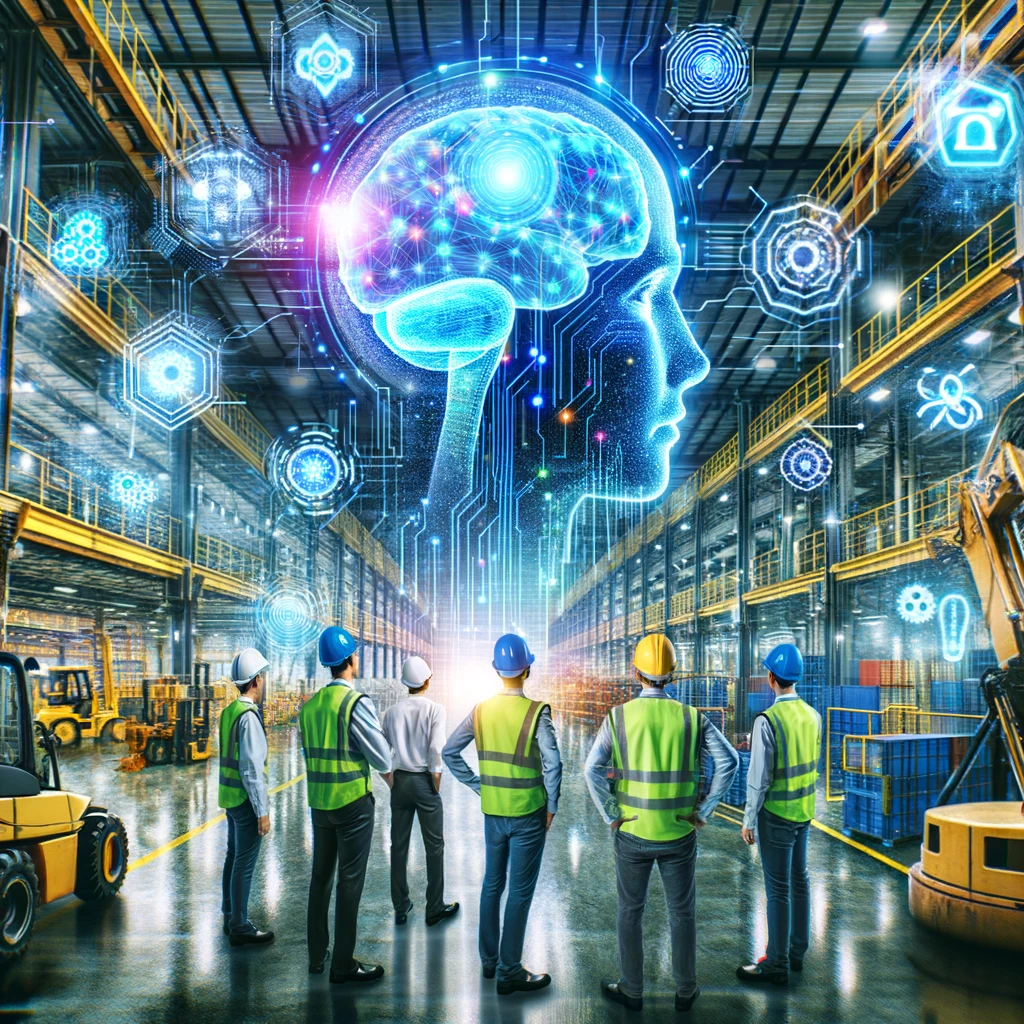In today's fast-paced world, where every second counts and safety is paramount, companies are constantly looking for ways to protect their workers.
Among the most promising innovations in this effort is the artificial intelligence (AI), which promises to transform the workplace safety in previously unimaginable ways. This article explores how AI is redefining safety paradigms, preventing accidents and saving lives in the process.
Imagine a workplace where every movement is analyzed in real time, where every potential risk is assessed before it even becomes a threat.
This isn't science fiction; is the potential that AI offers. By combining advanced data analytics, machine learning and computer vision, AI is at the forefront of a revolution in workplace safety, ushering in a new era where accident prevention is more proactive than reactive.
But how exactly can AI accomplish such feats? And what are the tangible impacts of this technology on the lives of workers and company operations?
Browse the content

The Reality of Workplace Safety Today
To understand the impact of AI, it is crucial to first recognize the current reality of workplace safety. Every day, workers around the world face risks that can lead to serious accidents, or worse, fatalities.
According to the International Labor Organization (ILO), it is estimated that 6,000 workers lose their lives every day due to work-related accidents or illnesses.
This alarming statistic highlights the urgency of finding more effective solutions to prevent such occurrences.
In response to this need, several strategies and technologies have been developed over the years, from government regulations to more advanced personal protective equipment (PPE).
However, despite these efforts, workplace accidents remain a disturbing reality for many. This is where AI comes in, with its potential to transform workplace safety in a profound and significant way.
AI offers an innovative approach to accident prevention, capable of identifying and mitigating risks in real time, ensuring more effective and personalized training, and constantly monitoring the health and well-being of workers. We will explore how this is possible in more detail in the next section.
Artificial Intelligence and Workplace Safety: How Does It Work?
Artificial intelligence, at its core, is a set of algorithms and machine learning techniques that allow machines to 'think', 'learn' and 'make decisions' in a similar way to humans.
In occupational safety, this ability is used to anticipate risks, optimize training and monitor conditions that could lead to accidents or occupational illnesses.
Real-Time Risk Monitoring and Analysis
AI can process and analyze huge volumes of data from sensors distributed throughout the workplace, such as surveillance cameras, wearables and other IoT (Internet of Things) devices.
This data can include information about the movement of people and machines, environmental conditions, and even vital signs of workers. AI algorithms identify patterns and detect deviations that indicate potential risks, allowing immediate interventions to avoid accidents.
Personalized Trainings and Virtual Simulations
AI also revolutionizes safety training by offering adaptive programs that adjust to each worker's learning profile.
Virtual simulations and augmented reality, powered by AI, allow workers to experience and learn how to react to dangerous situations in a controlled and safe environment, reinforcing learning without exposing individuals to real risks.
Benefits of AI in Preventing Accidents at Work
The benefits of implementing AI in workplace safety are vast and impactful. Here are some of the main ones:
Reduction of Accidents and Incidents
The application of AI to identify and analyze risks leads to a significant reduction in accidents and incidents. The ability to predict and prevent dangerous situations before they occur saves lives and reduces injuries, creating a safer work environment.
Improving Occupational Health
By monitoring the health and well-being of workers, AI can identify early signs of stress, fatigue or other conditions that could affect safety. This allows for timely interventions, such as workload adjustments or recommendations for rest, contributing to long-term occupational health.
Resource and Cost Optimization
Accident prevention reduces costs related to medical treatments, compensation and production interruptions. Additionally, AI can optimize the use of resources, such as safety equipment, through accurate analysis of needs and risks.
Success Stories: AI in Practice
Let’s explore some success stories where AI has been implemented in workplace safety:
1. Smart Wearables for Health Monitoring: In one factory, workers have started wearing wearable devices that monitor vital signs and movement patterns. AI analyzes this data in real time, alerting both workers and management to potential risks of repetitive strain injuries or heat stress.
2. AI-Powered Surveillance Systems: A construction company implemented AI security cameras capable of detecting non-use of PPE and risky behavior on the construction site. This allowed immediate interventions, significantly reducing the number of incidents.
Challenges and Ethical Considerations in Implementing AI
While artificial intelligence in workplace safety promises a range of benefits, its implementation is not without challenges. These challenges range from technical and financial issues to deep ethical concerns.
Costs and Training
One of the main obstacles is the initial implementation cost. AI technologies, along with the necessary infrastructure, can represent a significant investment.
Additionally, there is a need to train workers and managers to effectively use new technologies, which can be a time-consuming and expensive process.
Privacy and Surveillance
Privacy and surveillance issues are of particular importance. Continuous monitoring of workers, although done with the intention of ensuring their safety, raises concerns about privacy and individual autonomy.
It is crucial to establish clear policies that balance security with respect for workers' privacy.
Reliability and Responsibility
Reliance on automated systems also raises issues of reliability and liability. In the event of technology failures that lead to accidents, determining liability can be complex.
Furthermore, overreliance on AI could lead to a reduction in human surveillance, potentially overlooking risks that the system failed to detect.
The Future of Workplace Safety with AI
Despite these challenges, the future of AI-assisted workplace safety is promising. Innovations continue to evolve, offering increasingly precise and effective solutions.
The key to future success will be finding the right balance between technology and human touch, ensuring that AI is used as a tool to complement and enhance, not replace, human oversight and judgment.
Continuous Innovations
The field of AI is constantly evolving, with new technologies emerging regularly. These include advances in machine learning, computer vision and natural language processing, all of which have potential applications in improving workplace safety.
Human-AI Collaboration
One promising trend is the development of human-AI collaborative systems, where artificial intelligence and human intuition work together.
This hybrid approach can offer the best of both worlds: the efficiency and data processing power of AI, along with human critical judgment and adaptability.
Conclusion
The integration of artificial intelligence into workplace safety is setting the path to a future where work environments are safer, more efficient and adaptive. As we face challenges and ethical considerations, the journey toward continuous improvement in workplace safety is both an opportunity and a shared responsibility.
As we move forward, it is essential to remain focused on the workers we are protecting, ensuring that technology serves to improve their lives and not impose additional restrictions. With a commitment to responsible innovation and collaboration between humans and machines, we can create a future of work that is not just safer, but also more human.







